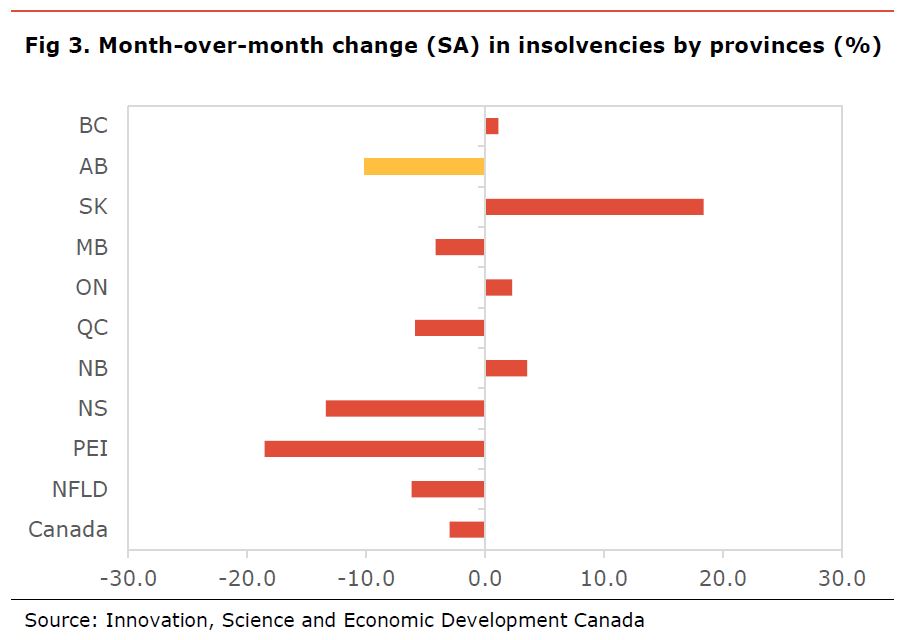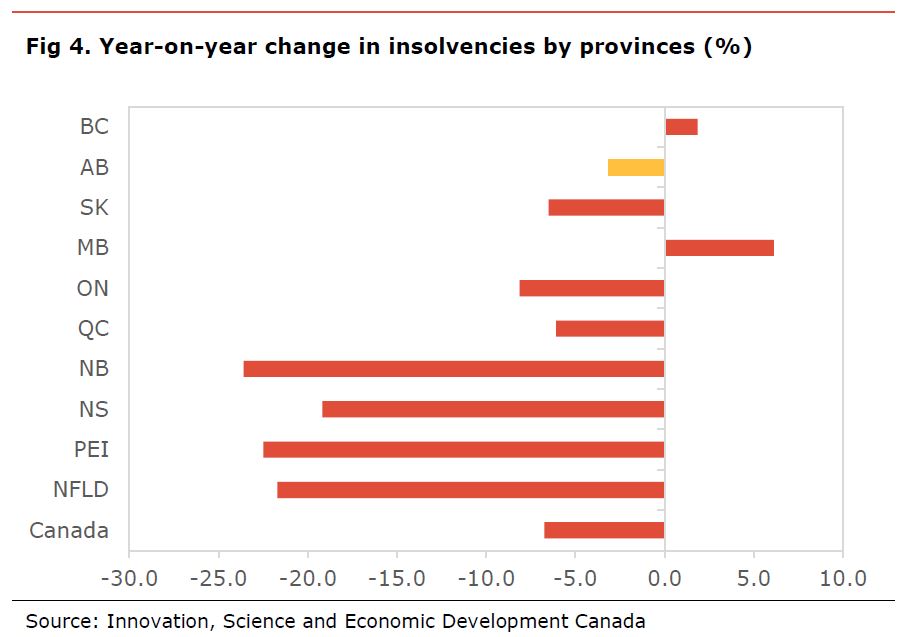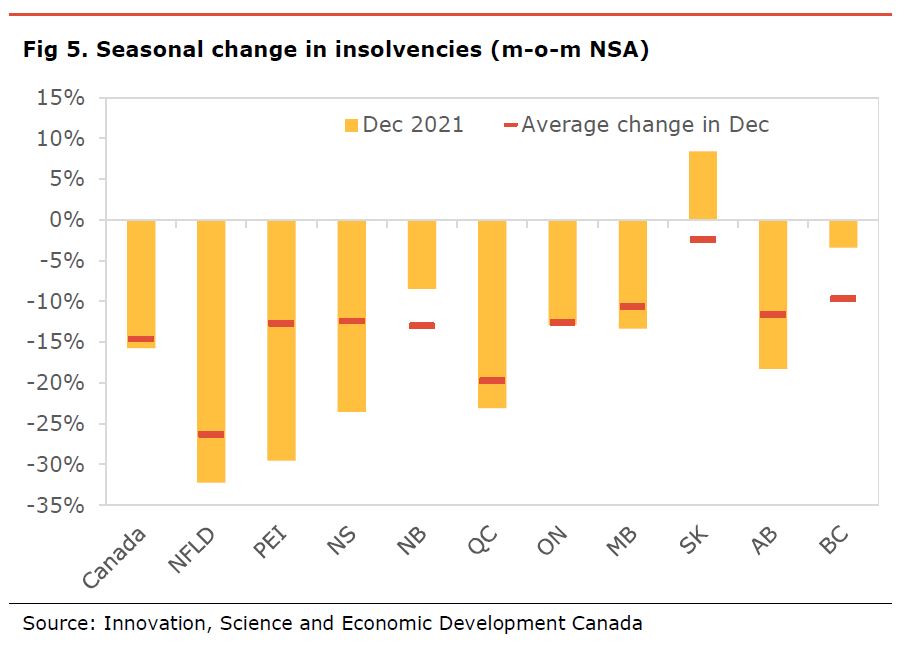Economic commentary provided by Alberta Central Chief Economist Charles St-Arnaud
Bottom line
After bottoming out late last year and rising most of the first half of 2021, insolvencies seem to be trending lower again. Continued assistance to households, low interest rates and the continued economic recovery likely weigh on insolvencies. The economic reopening and the associated broadening of the recovery and continued employment gains should help prevent further normalization in insolvencies. In addition, household disposable income remains well above its pre-pandemic trend, suggesting that, on average, households are better off now than before the pandemic. However, the phasing out of many government programs is likely to affect household disposable income and lead to a rise in insolvencies. Moreover, rising interest rates this year could also be a drag on household finances. The first few months of 2022 will be interesting, as insolvencies exhibit a strong seasonality and increase sharply during that period.
In Alberta, a strong recovery in the oil sector, with the value of oil production reaching an all-time high over the past 6 months (record production value of $10bn in October and December), and the associated tailwind on income and confidence are likely to prevent a sharp rise in insolvencies in the province.

Insolvencies decreased in December and remained well below their pre-COVID levels. Insolvencies, which include both bankruptcies and proposals (a renegotiation of terms), declined by 6.7% in December compared to the same month last year. This resulted from a 20.1% drop in bankruptcies, while proposals inched higher by 0.7% year-on-year.
On a monthly basis, insolvencies decreased 3.0% month-on-month seasonally-adjusted (sa) in December. The lower insolvencies were led by a decline in bankruptcies (-9.7% month-on-month sa) while proposals declined marginally (-0.3% month-on-month sa). Many provinces saw lower insolvencies on the month, led PEI, Nova Scotia, Alberta, Quebec and Manitoba. Insolvencies increased in Saskatchewan, New Brunswick, Ontario and BC.

In Alberta, insolvencies declined 10.1% month-on-month sa and 3.1% compared to the same month last year. Over the past 12 months, there have been 14.1k insolvencies, still well below their pre-pandemic levels of 17.4k. The decrease in insolvencies in December, on a seasonally-adjusted basis, came from a reduction in both proposals (-8.1% month-on-month sa) and bankruptcies (-12.1% month-on-month sa).


Independent Opinion
The views and opinions expressed in this publication are solely and independently those of the author and do not necessarily reflect the views and opinions of any organization or person in any way affiliated with the author including, without limitation, any current or past employers of the author. While reasonable effort was taken to ensure the information and analysis in this publication is accurate, it has been prepared solely for general informational purposes. There are no warranties or representations being provided with respect to the accuracy and completeness of the content in this publication. Nothing in this publication should be construed as providing professional advice on the matters discussed. The author does not assume any liability arising from any form of reliance on this publication.